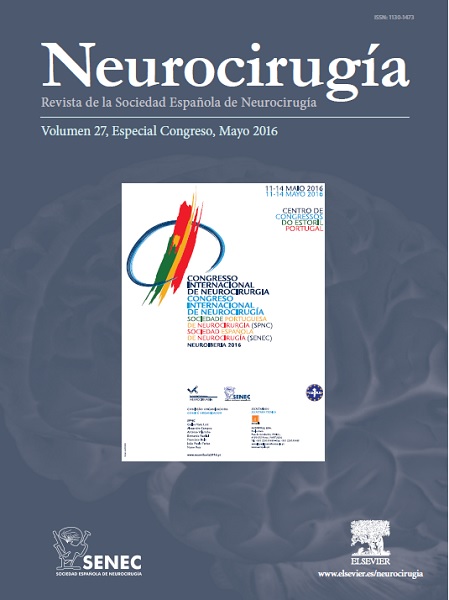P233 - Awake craniotomy for resection of cavernous angiomas (CA) located in eloquent areas: functional results and usefulness
Hospital Universitario Germans Trias i Pujol, Barcelona.
Introduction: Recent literature advocates to surgical removal of symptomatic cases of CA located in eloquent areas, particularly in cases of neurological deficit from bleeding or seizures. An accurate surgical approach is essential to completely remove the lesion and surrounding gliosis, with preservation of function. The aim of this study was to evaluate the usefulness of awake craniotomy for CA removal.
Material and methods: Consecutive series of 8 patients who underwent awake craniotomy for CA resection. The topography of the lesion was analyzed on preoperative conventional MRI fMRI and tractrography was also performed, with subsequent images fusion. The surgical approach was performed via the transgyral route using ultrasound and neuronavigation, under local anesthesia, with intra-operative functional mapping using direct cortico-subcortical electrical stimulation. The diagnosis of CA was confirmed by histological examination.
Results: The mean age at surgery was 44.57y (range 48-58y), 4 women and 4 men. All patients were right-handed, except one. Initial symptoms were seizures (7) and bleeding in one case. MRI study showed 3 lesions in the temporal lobe, 3 in the parietotemporal region and 2 in the frontal lobe. Intraoperatively, cortical mapping was positive in all 8 patients. All the lesions were totally removed. None had neurological permanent deficits. Cases affected by preoperative seizures became seizure free without AEDs. No bleeding or re-bleeding was observed at the follow-up.
Conclusions: Intraoperative cortical–subcortical mapping in awake patients with CA is helpful to perform more radical excisions not only to the lesion but also surrounding gliosis to the aim of resolve seizures, in absence of permanent neurological deficits.







